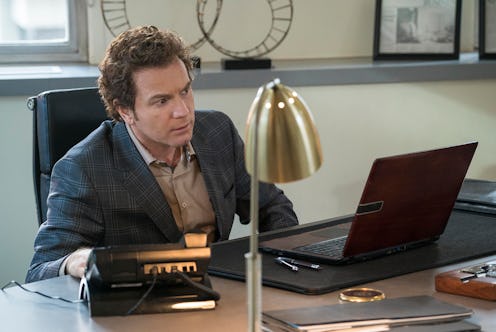
So far, FX's Fargo seems to be following the pattern set by an anthology series on the same network, American Horror Story: odd-numbered seasons are relatively contemporary, while the even-numbered seasons are period pieces. But why is Fargo Season 3 set in 2010, specifically? Why did creator Noah Hawley (also of Legion) choose that year specifically, rather than something closer to Season 1's events in 2006, or something closer to today? And why did he choose to return to the present after a season set in the past?
It probably won't surprise you that Hawley's answer to the latter question isn't actually "because that's how AHS did it." In a general sense, Hawley made the decision because he wanted to separate Season 3 from what came before. "I thought that, after 1979, it was important to tell a story that felt more modern," the writer/producer tells reporters in a conference call.
While Seasons 1 and 2 of Fargo were connected via the Solverson family, Hawley wanted the third iteration of the anthology to be a new beginning for the show. "This year I wanted it to stand more on its own two feet and to start again," he says. "If the first two years were sort of two chapters of a story on some level, then this is a new book."
And the updated setting means Hawley can tackle some themes that would be impossible to address back in the 1970s — or even just a decade ago. "It also allowed me play with other elements of the modern world that have occurred since 2006," the showrunner says. Namely, "the rise of social media, and what that does to a place where community is based so much in tangible human interactions in a very wintry, isolated region. What does it do when suddenly you have access all the time to a virtual community? What does that do to your real-life relationships?"
But there's an even more specific reason why Hawley chose 2010 for the new season, and it has to do with something that happened in the intervening years between Seasons 1 and 3. "Obviously, our first year was set in 2006, which was before the big global event of our time: the financial crash in 2008," Hawley explains. "So if 2006 was sort of the salad days of America, then 2010 was the aftermath and the struggle of everyone to get back to prosperity."
That struggle is something viewers will recognize in one of Season 3's main characters: Emmit Stussy, one of the two brothers played by Ewan McGregor. "I thought it would be interesting if one of our characters was a real estate magnate who's the Parking Lot King Of Minnesota," Hawley says. "What would those last two years have been like for him, and what would he have to do to survive this financial collapse?"
Of course, viewers already know the answer to that question, thanks to the events of the Fargo Season 3 premiere, "The Law Of Vacant Places." Hit hard by the financial crisis of 2008, Emmit was forced to borrow money from a shady source — money that turned out to be less of a loan and more of an investment when the source refused to accept repayment, preferring compensation in the form of illegal favors instead.
Part of what makes Fargo so compelling is the incredible specificity of its characterization and plotting and setting… so it should be no surprise to learn that that same attention to detail was given to the year in which Season 3 is set. Nothing is ever arbitrary in the world of Hawley's Fargo.